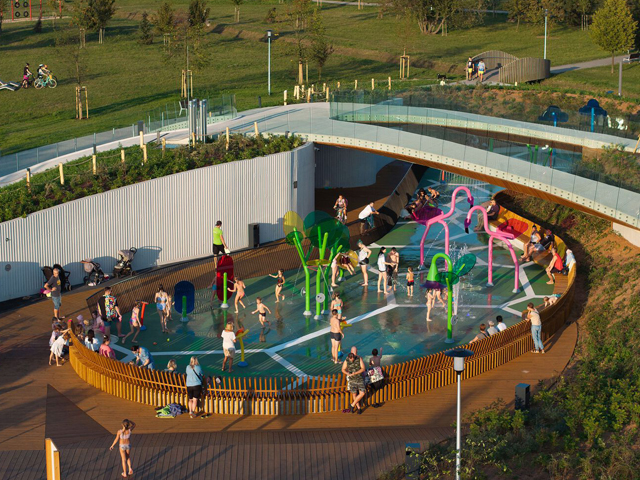THE RETURN TO MAORI GAMES
21 May 2019
This amazing nature-based playground is the first of its kind for Auckland, creating a space that is based on traditional Maori games and play artefacts. Check it out.

The Mara Hupara playground is part of Te Auaunga, an Auckland Council Healthy Waters project in Mount Roskill, Auckland.
The project team collaborated with Auckland Council and Mark Lewis, a landscape architect at Boffa Miskell, who is the project leader of both the playspace and of the wider project, to create a natural space that offers a variety of unique experiences while also working to restore the wairua of the Walmsley and Underwood Reserves.
The project initially began as a stormwater and flood control program, and play wasn’t even considered. “It quickly became apparent that we had an opportunity to make a profound transformation and create a park along this regionally significant watercourse that would truly enhance the area and the lives of the people living here,” said Lewis. 
With four schools and several early learning centres in the area, public demand was high for a playspace.
As ideas for the playground developed, the idea to incorporate traditional Maori play items arose under the guidance of Harko Brown, an expert in Maori games. After interactive workshops with Brown and the local children, the idea for a ngā aro tākaro playground was conceived.
aro-tākaro (play items) are linked and valued to traditional games in Maori culture. Ngā aro-tākaro reinforce social norms and connect people to their environments, becoming a means for children to engage with nature and history simultaneously through challenge and learning. 
The Maori play elements of this space include:
- A torere tree for climbing
- A triple-posted tama-tane-wahine installation
- Giant upturned ancient kauri log roots – te ko-uru – that are linked by ko-papa
- Several dozen hikeikei on which to hop, jump and walk over;
- A land-based kōkiri
- A series of wera-te-paatu to practice agility, speed and balance

“By integrating traditional play elements into this project, we are encouraging our mokopuna to re-engage with the restored natural environment and thereby to reawaken their sense of history and place,” Lewis said. “The project team specifically set out to deliver a play space that spoke to people about wild places and natural environments, and created opportunities for exploration, daring, and imagination using nature as a guide.”
Images © Jay Farnworth/Boffa Miskell







